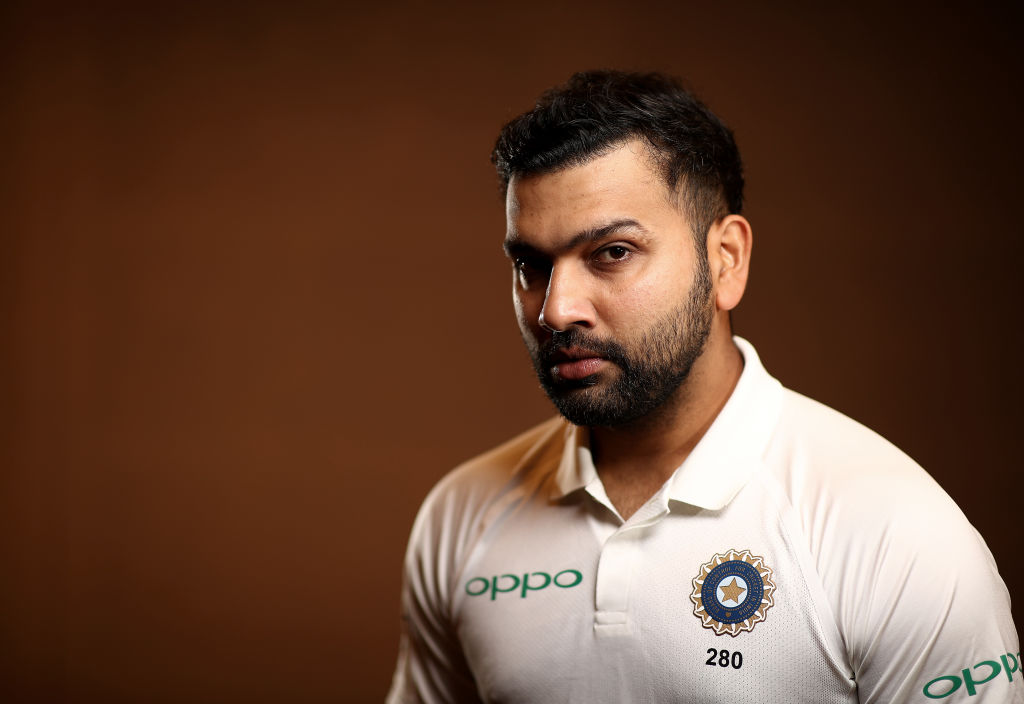Past disappointments aside, India should trust Rohit Sharma in Australia

Getty
The tag of “a batsman of ferocious talent” and the ability to take any bowler to the cleaners have given Rohit Sharma a box-appeal, which is not common to many. He has been the ultimate player in the modern-day cricket while picking a dream team, but in Test cricket, he continues to flounder.
Once on
In limited-overs cricket, while playing the shots against seriously fast deliveries, one needs to understand the type of the ball from the hand a tad quicker than the medium fast bowlers and needs to have a super-quick body movement. It is an essential - albeit simple but one of the most important basics coaches tell their wards in the junior level - to strike the ball clean. While Rohit has never been great in his feet movement, he has the brilliant forward press that has mostly resulted in him ending up in the right position to execute his shots, regardless of the fact that the ball comes full or digs one short.
But, Test cricket, as the name suggests, is a different ball game altogether. The thing that brought so much success to Rohit in the 50-over format is the exact reason why he has continued to struggle in the longest version of the game. Bowlers are concerned about their line and lengths in ODIs and T20Is, where one mistake can bring a lot of problems to the fore, but in Test cricket, they certainly don’t care about that. The Glenn McGrath doctrine of “bowling at a length” until it forces the batsmen to commit mistake has been a consistent feature in the five-day format and no matter the innovation that comes along thanks to the 20-over cricket, it is still a prized possession. Rashid Khan bore the brunt of trying too much in the Test match against India, and it was not until he started bowling on one length continuously, he got his maiden Test wicket. Rohit is good at smashing any

 © Getty
© GettyThere is a phrase that cricket commentators have fallen in love with over the years - “Horses for courses”. Rohit may have been a terrible batsman in the red-ball cricket, but he is better when the ball rises at a steeper trajectory, as will be the case in Australia. The hosts will field a depleted batting line-up, but their bowling is enough to keep them excited about the prospect of regaining the Border-Gavaskar Trophy, once again. Mitchell Starc, Josh Hazlewood, and Pat Cummins are as good as anyone in the world, and will definitely try to pick early wickets so as to build early pressure in the game. Going full may have been the option they may take against the Indian skipper, but Hazlewood is for that. Starc and Cummins will go short and won’t trade bounce for anything despite the fact that Indian batsmen are more prone to mistakes against the moving ball that is where Rohit Sharma’s importance comes in.
Since the day he made a big impression in Australia as a young batsman in the 2007-08 CB series and followed that up with a match-turning partnership with Sachin Tendulkar in the first final at the SCG, he has proved that he can tackle bounce easily, irrespective of the format. His game is based on the simple tactics of lesser feet movement, but his understanding of the trajectory - something that gave enormous success to Ricky Ponting in Australia - means he is technically well equipped to tackle the short-pitched deliveries and at the same time, his backfoot play allows him to make the most of the lack of movement.
As far as conditions are concerned, there will be two starkly contrasting pitches in Australia. While Adelaide
Hanuma Vihari is an extremely likeable character on the field and in the few chances that he has got in the India A side and Test cricket, he has shown in flashes that he belongs to the league and here is a for a long haul. However, Australia is a land where experience always triumphs over subtle promise and machinations, and that makes Rohit an ideal candidate ahead of the Andhra all-rounder.
Most importantly, the selectors still believe him that he has something to offer in the longest format of the game. That they do so despite him having played some terrible cricket in all overseas Test matches is a testament to the team's trust in his abilities. But as has been a case in the Indian team right now, mistakes or the lack of performance thereof will no longer hold as an excuse and it's for Rohit’s to swim or sink from here on. But before that, the team management will have to trust him once again and give him that middle-order spot back, hopefully, for better results.
